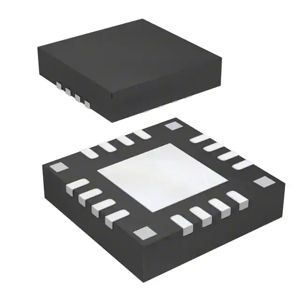
Motion Sensors - Accelerometers
Motion Sensors - Accelerometers: Precision in Motion Detection
Definition:
Motion Sensors - Accelerometers are specialized devices designed to measure acceleration forces, including static (gravity) and dynamic (movement or vibration) forces. These sensors are essential for detecting and analyzing motion in various applications, from consumer electronics to industrial systems. By converting mechanical motion into an electrical signal, accelerometers provide critical data for orientation, tilt, shock, and vibration detection.
Types of Motion Sensors - Accelerometers:
1. MEMS (Micro-Electro-Mechanical Systems) Accelerometers: Compact, low-power sensors widely used in smartphones, wearables, and IoT devices for motion tracking and gesture recognition.
2. Piezoelectric Accelerometers: Ideal for high-frequency vibration monitoring in industrial machinery, automotive testing, and aerospace applications.
3. Capacitive Accelerometers: Known for high accuracy and stability, commonly used in navigation systems, robotics, and medical devices.
4. Piezoresistive Accelerometers: Robust sensors capable of measuring high-impact forces, often applied in automotive crash testing and structural health monitoring.
Buying Recommendations:
When selecting an accelerometer, consider the following factors:
- Measurement Range: Choose a sensor that matches the expected acceleration levels (e.g., 2g for consumer devices vs. 500g for industrial impacts).
- Bandwidth: Ensure the sensor s frequency response aligns with your application (e.g., low-frequency for tilt sensing vs. high-frequency for vibration analysis).
- Output Type: Analog, digital (I2C/SPI), or wireless outputs should suit your system s integration requirements.
- Environmental Durability: For harsh environments, opt for models with robust enclosures and resistance to temperature, humidity, or shock.
Motion Sensors - Accelerometers are pivotal in enabling smart, responsive systems. Whether for innovation in consumer tech or precision in industrial automation, selecting the right accelerometer ensures optimal performance and reliability.
Filter and sort
Categories
HV101
ACCEL IEPE SENSOR 100MV/G 5%
PXLS60230AES
XTRINSIC 1 AXIS ACCELEROMETER
7003 HT
PIEZOELECTRIC ACCELEROMETER/MINA
PXLS70620AES
MED Y 1 AXIS ACCELEROMETER
PXLS80322AESR2
2 AXIS MED/MED XY
HT786A
ACCEL IEPE SENSOR 100MV/G 5%
MMA5124LCWR2
ACCELEROMETER 240G PCM/SPI 16QFN
FXLS8974CFR3
IC 3-AXIS ACCELEROMETER 10-DFN
PXLS60422AES
XTRINSIC 2 AXIS MED/MED XZ ACCEL
PXLS70630AES
HIGH Y 1 AXIS ACCELEROMETER
PXLS60333AESR2
XTRINSIC 2 AXIS HIGH/HIGH XY ACC
POLY-S167A-L868EU
PREVENT MACHINE MALFUNCTIONING W
ADXL288WBRDZ-RL
IC ACCELEROMETER 16SOIC
PXLS81322AESR2
2 AXIS MED/MED XY
PXLS81433AESR2
2 AXIS HI/HI XZ
PXLS63230AESR2
PSI5 PROTOCOL HIGH X 1 AXIS ACC
SA-107 LN
FORCE BALANCE ACCELEROMETER/SEIS
PXLS84333AESR2
2 AXIS HI/HI XY
ADXL373BCCZ-RL
MICROPOWER THREE-AXIS 400G ACCEL
PXLS60322AESR2
XTRINSIC 2 AXIS MED/MED XY ACCEL

